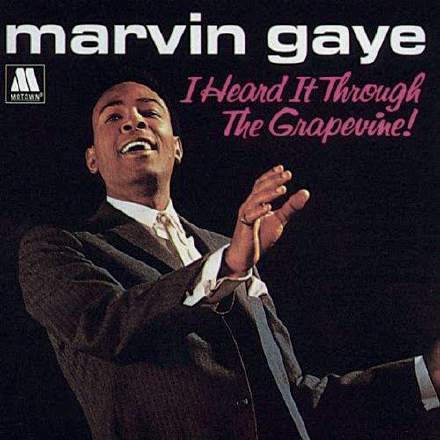
This mix presents one of those slightly curious early-days stereo panoramas: drums, percussion and rhythm chops in the left channel; lead vocal in the centre; and bass, keys, backing vocals, and orchestra overdubs on the right. The clustering of the instruments at those distinct left-centre-right positions is easy enough to rationalise, on the basis that stereo consoles of the time often featured simple LCR panning switches, rather than smoothly variable pan pots. The specific groupings of instruments at those panning points, however, would never pass muster in the modern charts: not only are neither bass nor kick-drum central, but the left-channel’s rhythm guitar is far too spindly to offer much balance to the massed chordal instruments at the right stereo extreme.
This Sound On Sound article suggests one reason for this, in that Motown engineer Mike McLean reveals that the company’s early three-track tape recordings tended to put the vocal on track one, the rhythm section on track two, and horns and backing vocals on track three. This would have encouraged a very similar kind of stereo mix as heard in this production, and although ‘Grapevine’ harks from the era of eight-track I wonder whether the heritage panning habits of the studio staff still prevailed. Whatever the grounds, it does provide a splendid opportunity to enjoy one of James Jamerson’s greatest bass lines without interference from the drum kit: the continual shifts in and out of counterpoint with the lead vocal; the surprisingly chromatic nature of fills such as 0:44 or 0:53; and the fact that Jamerson only plays downbeats three times during the whole song, crucially before the final title hook of each chorus (0:52, 1:41, and 2:38).
The vocal tone is pretty savage, it has to be said. As I understand it, producer Norman Whitfield insisted that Gaye sing in an uncomfortably high key to improve contrast between his tone and the silky smoothness of house backing vocalists The Andantes. But there must surely also be engineering reasons for the pronounced 5.7kHz resonant peak and copious distortion. Indeed, there’s lashings of distortion all over this record, and while there are decent aesthetic reasons for this on the electric guitar/piano tones, I can’t help feeling that moments such as “not much longer would you be mine” (1:37) are simply the outcome of a loudness war that’s been with us a lot longer than some people care to recall.
Judging by the present kick, snare, and hi-hat timbres, I’d say that the kit sound is probably a mix of a kick-drum close mic and a single overhead mic — a common setup at the time. The question is: where is the overhead? I’d hazard a guess at a single directional mic positioned quite close to the rack tom, but pointing back towards the snare and hi-hat. This would help explain the rack tom’s dominance during drum fills, and also the comparatively washed-out flapping of the more distant, off-axis floor tom.
Finally, I’m puzzled by the orchestra’s tuning at 2:00-2:06, which suddenly wanders so much that it sounds like tape ‘wow’. Perhaps there were tape-motor problems during overdubbing? Or might that section even have been ‘flown in’ from another tape by some improvised means?










